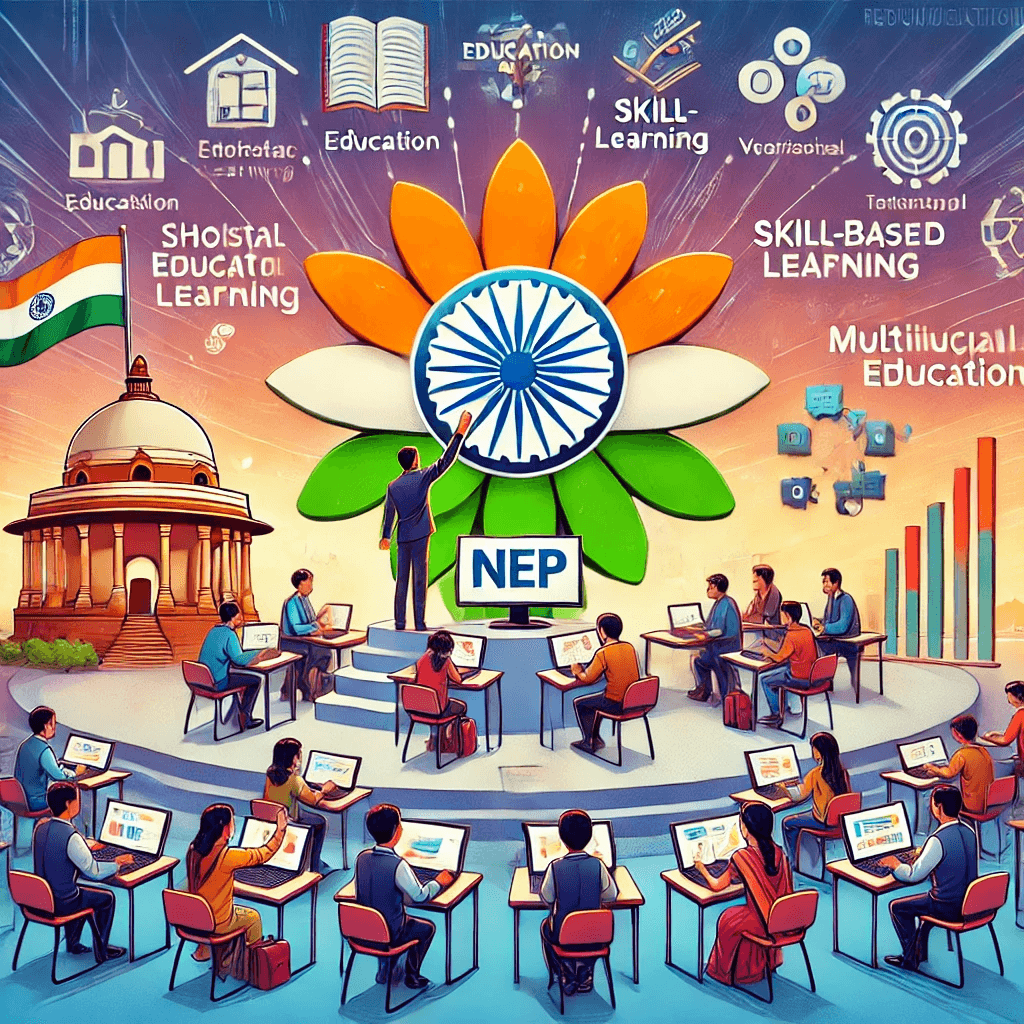How the National Education Policy (NEP) is Revolutionizing Indian Education
Education plays a critical role in shaping a nation’s future. The National Education Policy (NEP) is a transformative initiative by the Indian government aimed at overhauling the country’s education system. Implemented in 2020, the policy introduces significant reforms across all levels of education, ensuring holistic learning, flexibility, and skill development.
At SSRVM (Sri Sri Ravishankar Vidya Mandir), the principles of the National Education Policy (NEP) are being actively incorporated to create a dynamic and student-centric learning environment. This blog explores how the National Education Policy (NEP) is revolutionizing Indian education and shaping the future of learning.
Key Highlights of the National Education Policy (NEP)
The National Education Policy (NEP) introduces a range of reforms designed to modernize education, enhance accessibility, and align with global standards. Some of the most impactful changes include:
New School Structure (5+3+3+4 System) – Replaces the traditional 10+2 system to focus on early childhood education and foundational learning.
Emphasis on Skill-Based Learning – Encourages vocational training and hands-on experiences.
Multilingual Approach – Promotes regional languages as a medium of instruction for better comprehension.
Flexible Curriculum – Offers students the freedom to choose subjects based on their interests.
Technology Integration – Incorporates digital tools to enhance learning and accessibility.
At SSRVM, the implementation of the National Education Policy (NEP) ensures that students receive holistic, well-rounded education that nurtures intellectual, emotional, and creative growth.
How the National Education Policy (NEP) is Transforming Education
1. New Structure for Schooling (5+3+3+4 System)
One of the biggest changes introduced by the National Education Policy (NEP) is the restructuring of the school system:
Foundational Stage (5 Years): Focuses on play-based and activity-based learning for ages 3-8.
Preparatory Stage (3 Years): Encourages experimental learning, including arts and interactive activities for ages 8-11.
Middle Stage (3 Years): Introduces subject-based learning with a strong emphasis on reasoning and analysis for ages 11-14.
Secondary Stage (4 Years): Provides students with multidisciplinary education, choice-based subjects, and vocational training for ages 14-18.
At SSRVM, this new system is being effectively integrated to ensure a smooth transition at every stage of learning.
2. Promoting Multilingualism and Regional Languages
The National Education Policy (NEP) emphasizes the importance of teaching in students' mother tongues or regional languages up to Grade 5, while also ensuring proficiency in English and Hindi. Benefits include:
Improved cognitive development.
Better understanding of concepts.
Stronger connection with cultural heritage.
SSRVM actively promotes multilingual education, ensuring students become proficient in multiple languages while retaining a strong foundation in their native language.
3. Skill Development and Vocational Training
The National Education Policy (NEP) integrates skill-based learning with traditional subjects to make students industry-ready. Key aspects include:
Vocational training from Grade 6 onward.
Internship opportunities for practical exposure.
Hands-on projects and experiential learning.
By implementing these principles, SSRVM ensures that students are prepared for real-world challenges beyond academic learning.
4. Focus on Digital and Online Learning
Technology is a crucial component of modern education. The National Education Policy (NEP) encourages digital learning through:
Online courses and e-books for accessibility.
Smart classrooms and AI-driven learning modules.
Coding and computational thinking integrated into the curriculum.
At SSRVM, technology-driven education is seamlessly blended with traditional learning to provide an enriched academic experience.
5. Holistic and Creative Learning Approaches
The National Education Policy (NEP) places emphasis on creative learning, focusing on the all-round development of students. This includes:
Integration of arts, music, and sports into the curriculum.
Reduced pressure of board exams with continuous assessment methods.
Promotion of critical thinking, innovation, and problem-solving skills.
As a pioneer in holistic education, SSRVM has already incorporated creative learning methodologies, ensuring that students receive a balanced and engaging education.
6. Higher Education Reforms and Flexibility
The National Education Policy (NEP) extends its reforms to higher education by:
Allowing multiple entry and exit points in degree programs.
Introducing a credit-based system that enables students to transfer credits across universities.
Establishing a Higher Education Commission of India (HECI) to oversee quality standards.
This policy ensures that students at SSRVM have diverse pathways to continue their education beyond school.
Frequently Asked Questions (FAQs)
1. What is the National Education Policy (NEP)?
The National Education Policy (NEP) is a framework introduced by the Indian government in 2020 to transform the education system, making it more flexible, inclusive, and skill-based.
2. How does the National Education Policy (NEP) benefit students?
It introduces a flexible curriculum, emphasizes skill development, promotes multilingual learning, and integrates technology to create a well-rounded education system.
3. How is SSRVM implementing the National Education Policy (NEP)?
SSRVM follows the policy’s principles by incorporating holistic education, digital tools, and vocational training while maintaining a strong focus on creative learning.
4. What is the 5+3+3+4 structure in the National Education Policy (NEP)?
This new schooling structure replaces the traditional 10+2 model and focuses on foundational, preparatory, middle, and secondary stages to enhance learning.
5. Does the National Education Policy (NEP) promote digital learning?
Yes, the policy encourages smart classrooms, AI-based learning, coding from an early age, and online educational platforms to make learning more engaging.
6. How does the National Education Policy (NEP) impact higher education?
It introduces multiple entry-exit options in degree programs, a credit-based system, and regulatory reforms to improve higher education standards.
Conclusion
The National Education Policy (NEP) is a game-changer in the Indian education system, fostering holistic development, multilingual learning, and skill-based training. Institutions like SSRVM are leading the way in implementing these reforms, ensuring that students receive high-quality education tailored to modern needs.
As the National Education Policy (NEP) continues to shape the future of education, its impact will create a generation of well-rounded, knowledgeable, and skilled individuals ready to excel in a globalized world.

